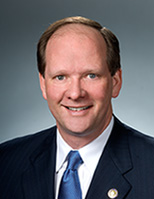 A company from Delaware has announced plans to build and operate 1,000 convenience stores on the East Coast, featuring alternative fuels, especially E85 ethanol and biodiesel.
A company from Delaware has announced plans to build and operate 1,000 convenience stores on the East Coast, featuring alternative fuels, especially E85 ethanol and biodiesel.
This story posted on the Convenience Stores Decisions web site says Alternative Fuel Distributors of Wilmington wants to have all the stores in operation in three years and the first 100 open by the first part of next year:
The stores, according to the plan, would all be company owned and would be marketed under the “Go Green Station” retail brand. It estimates that E-85 gasoline is expected to sell for $2.25 to $2.50 per gallon, as opposed to the projected $4 per gallon for regular gas.
Alternative Fuel Distributors will create an IPO to fund the venture. The company was organized in June 2007 to “develop, construct own and operate convenience stores dedicated to supplying alternative fuels to retail customers,” it said in a news release.
Current plans call for the ownership and operation of alternative fuel terminals in New Jersey, Pennsylvania and Maryland to supply fuels to company-owned convenience stores and wholesale customers from Washington, D.C. to New York.
The move would nearly double the number of E85 stations in the entire country as there are just 1,500 in the whole United States (compared to about 150,000 gas stations in America). It would also dramatically increase the number of E85 outlets between New York and Richmond… just 20 of those right now.


 The crisis on Wall Street is having an impact on biofuel production in this country. Iowa-based Renewable Energy Group is delaying building two biodiesel plants, one in Louisiana and one in Kansas, because of the recent trouble in the bond market.
The crisis on Wall Street is having an impact on biofuel production in this country. Iowa-based Renewable Energy Group is delaying building two biodiesel plants, one in Louisiana and one in Kansas, because of the recent trouble in the bond market. A new web site launched earlier this year offers a new way to buy biodiesel.
A new web site launched earlier this year offers a new way to buy biodiesel. Today is the first day of spring and the traditional celebration of National Agriculture Day.
Today is the first day of spring and the traditional celebration of National Agriculture Day.

 The funding will help Liberty purchase equipment to improve its ability to move and/or load and unload train cars, according to the release. By utilizing existing railroad, Liberty will have a greater ability to use different feed stocks to produce biodiesel, the statement continued.
The funding will help Liberty purchase equipment to improve its ability to move and/or load and unload train cars, according to the release. By utilizing existing railroad, Liberty will have a greater ability to use different feed stocks to produce biodiesel, the statement continued. Several ethanol producers are among the winners of the 14th annual
Several ethanol producers are among the winners of the 14th annual  During a campaign stop in corn country over the weekend, the
During a campaign stop in corn country over the weekend, the  Dr. Steven Chu, director of the Lawrence Berkeley National Laboratory in California, said much the same at the 25x’25 Renewable Energy Summit last week in Omaha, according to
Dr. Steven Chu, director of the Lawrence Berkeley National Laboratory in California, said much the same at the 25x’25 Renewable Energy Summit last week in Omaha, according to  Continental Airlines will run a test flight on biofuel sometime next year.
Continental Airlines will run a test flight on biofuel sometime next year.